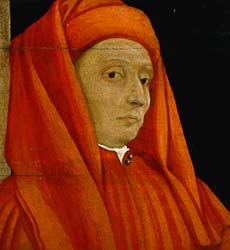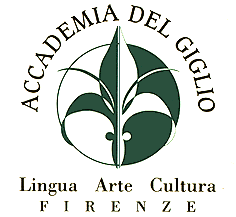 Giotto is nowadays considered probably the most famous painter and architect of the 14th Century in Italy, but his reputation was also widespread at his times. The poet Dante even named him in his Divine Comedy:
Giotto is nowadays considered probably the most famous painter and architect of the 14th Century in Italy, but his reputation was also widespread at his times. The poet Dante even named him in his Divine Comedy:
« Credette Cimabue nella pittura
tener lo campo, ed ora ha Giotto il grido,
si che la fama di colui oscura »
(Dante Alighieri, Purgatorio XI, 94-96).
“In painting Cimabue thought that he
Should hold the field, now Giotto has the cry,
So that the other’s fame is growing dim.
According to Vasari, Giotto came from a very poor family and before becoming a painter he was just a shepherd living in a village called Vespignano, in the nearby of Florence. Vasari wrote that, while he was pasturing the flock, he used to draw some sheep with a pointed stone on some flat rocks. One day Cimabue, an eminent Florentine painter, spotted the young Giotto drawing in the fields and looking at his works he was greatly surprised by Giotto’s skills. Cimabue decided then to ask permission to Giotto’s father for taking his son to Florence, where he could teach him to paint.
During all the Middle Age and the Renaissance period the boys who wanted to become artists had to go to learn the fine arts in the workshop of a famous painter or sculptor and there they had also to helping him in his works. Usually apprentices were ordered to prepare some works, leaving them unfinished but ready to be used just in case of a new or changed commission. In this way every workshop used to have a stock of sketched artworks ready to be accomplished .
Giotto was well-known also for his lively temper and his sense of humour: it is said that once he painted a fly on a nose of a face Cimabue had drawn before. When his master came back to continue his work, he repeatedly tried to drive the fly away because it appeared so realistic that he could not believe it was drawn.
This little story told by Vasari shows that Giotto painted with a new conception of the reality, of the human body, of the space and nature too. Giotto actually managed to give his frescos an idea of depth and volume trying to make a lifelike and detailed background. He painted figures looking very physical and occupying a true position in the space. That is why, if you look at the frescoes of Santa Croce church in Florence, you will see how Giotto’s painting is very effective also in representing the character’s emotions and also in describing the architecture or the objects of each scene.







Interesting! I really like the nature painting it reminds me of a story i read not to long ago.
Ciao